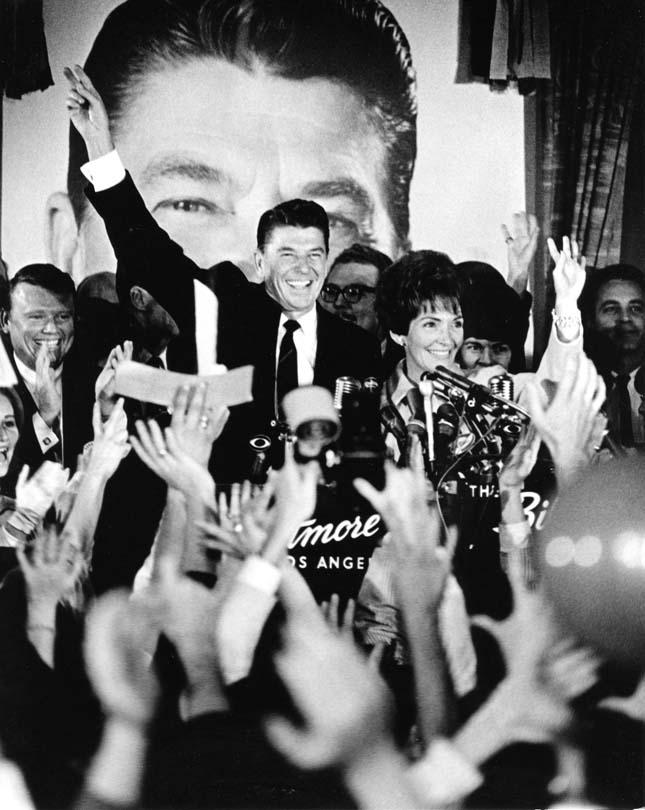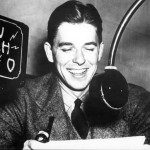Faces of the Nation: Politics in Art
By • May 3, 2012 0 1134

History surrounds us in Washington, politics is the humidity of our daily lives as much as suffocating temperatures and the news—intimate, immediate, profoundly affecting—sit beside us at breakfast, lunch and dinner.
History, politics and the news are a part of the culture of the city as an atmosphere, and in actuality. All three are still on hand even as the tumult and shouting dies down only in degrees after the narrow avoidance of a U.S. debt default.
The divisions—deeply felt and deeply expressed, stringent and strident—which helped propel the crisis right to edge of a chasm, the politics that dictated the news and the horrific historic moment at hand could be seen quite literally in three different exhibitions which explore the historic, political and news-driven immediacy which is as much a part of our cultural existence as the neighborhoods where we sleep and live.
No one kept track, but it’s fair to think that Ronald Reagan’s name was invoked at least hundreds of times during the noisy debates, the constant press conferences, the news stories and blogs, more often than not by the Tea Party members who had taken his “small government” message to heart. Reagan, perhaps in ways not intended, was a source of inspiration during the debate that drove the debt ceiling crisis.
At the National Portrait Gallery, Ronald Reagan’s remarkable life and continuing legacy is being celebrated in the NPG’s marvelous one-room examination and exhibition “One Life: Ronald Reagan,” offering small clues about a larger-than-life persona.
On the flip side, the faces of the other contending political forces in the great national chasm can be seen up close and artistically, glowing with a certain kind of humanity, in the exhibition “Democratic Principles” at the Women’s National Democratic Club in Dupont Circle, a selection of 22 paintings of progressive political leaders.
The debt ceiling crisis was recorded with stark immediacy not only by the television and news writers but by press photographers, and some of their efforts (maybe the round of golf between POTUS and Boehner) will surely make their way into the next White House News Photographers Association annual “Eyes of History” show. You can see last year’s best of the best—a powerful mesh and mash of national, political and world news photography—at Pepco’s downtown Edison Place Gallery through Aug. 12.
During the debt ceiling battle, you might have thought that Reagan was the founder of the Tea Party, so often was his guiding principle of small government invoked. If you take a look around at the “One Life” exhibition, you’ll find he was much more than that, and not quite that, either. He had qualities, not just conservative principles, to commend him to the American public, a persona that projected strength and optimism that was part movie imagery, part down-to-earth-reality.
The exhibition shows his roots in small-town America in Illinois, his days as a radio sports caster in Des Moines, his years as a Hollywood actor of considerable renown, if not top-drawer star wattage, his days working for General Electric as a speaker and television host and his improbable second life as a master politician who won two terms as governor of California and President of the United States.
The imagery in this exhibition defines the man’s popularity, the way others saw him and to a great degree admired him once he entered the political arena. Look at some of the photographs here—Aaron Shikler’s Time Magazine painting of Reagan in an unbuttoned shirt and a big belt buckle, his hands in back pockets. Or a photo of Reagan doing some budget jawboning with then House Speaker Tip O’Neill, a classic portrait of two Irish-American polls—you see his self-evident charm and strength. Nowhere do you see, in the numerous photographs, paintings and portraits, an ounce of self-doubt.
This is the Reagan people will remember—you won’t find much of the contentiousness, the Iran Gate, the lack of empathy for America’s unfortunates here. This is the star wars, anti-Communist, “tear down the wall” warrior, the mourner in chief after the Challenger crash, the morning-in-America celebrator.
“One Life,” when it comes to most of its subjects, is celebratory in nature, and with Reagan, there’s no exception. It’s the public man on display, his sunny appeal that comes through; including his view that big government was the bane of American political life.
But perhaps the biggest thing—a certain kind of class that transcended politics and ideology—on display here is the handwritten letter to the American public in 1994 announcing that he had been diagnosed with Alzheimer’s at age 83. It was full of hope and buoyancy, without an ounce of self-pity, the kind of language and attitude that helped propel him to so much political success and the status of icon. (“One Life: Ronald Reagan” continues through May 28, 2012.)
There are also some icons on display in the “Democratic Principles” exhibition of paintings by Elizabeth McClancy, which focus on progressive leaders known for their support and defense of causes, groups and people in need of political defenders and supporters. Many of them are elected members of the U.S. Senate, one or two are legends, some are no longer with us, and one of them is the President of the United States.
The politics in this case are less interesting than the portraits which seem to define, in one painting, the essence of the subject. It’s a telling exhibition of faces of not only of Barack Obama, but the Lion of the Senate, Ted Kennedy, whom it is difficult not to imagine as a ghost on the Senate floor during the contentious debt debate. It includes former Secretary of State Madelaine Albright and the current Secretary of State Hilary Clinton and her husband, former President of the United States Bill Clinton, as well as current partisan battlers like Kerry, Leahy, Mikulski, Pelosi, Schumer and Boxer.
Given the astonishing amount of natural disasters, big news stories and political conflict and controversy that have taken place more than halfway into 2011, it’s difficult to look at the photographs in the “Eyes of History” exhibition without thinking of them as a piece of history, far removed from last week’s or next week’s turmoil, the next story, the next flood, the next Wall Street free fall.
Except, of course, that they’re not. Look at the series on American soldiers recovering from traumatic wounds and you can hear the mortars, the rapid fire in the mountains of Afghanistan. Look at the triumphant, then wan face of the president and it feels as if you’ve seen it just a moment ago, with more grey hair. Look at the angry and worried faces of people out of work, trying to get by and feed their families and you see not months ago, but now. The dramatic scenes of the Haitian earthquake still leaves footprints and is repeated in other disasters—the faces of the starving children of Somalia will surely be a part of the next “Eyes of History” gathering of photographs.
- Ronald at the victory celebration as Reagan wins bid for California governor. | courtesy of Ronald Reagan Presidential Library, Si
- Courtesy of Ronald Reagan Presidential Library, Si
- Aaron Shikler, Oil Painting.





